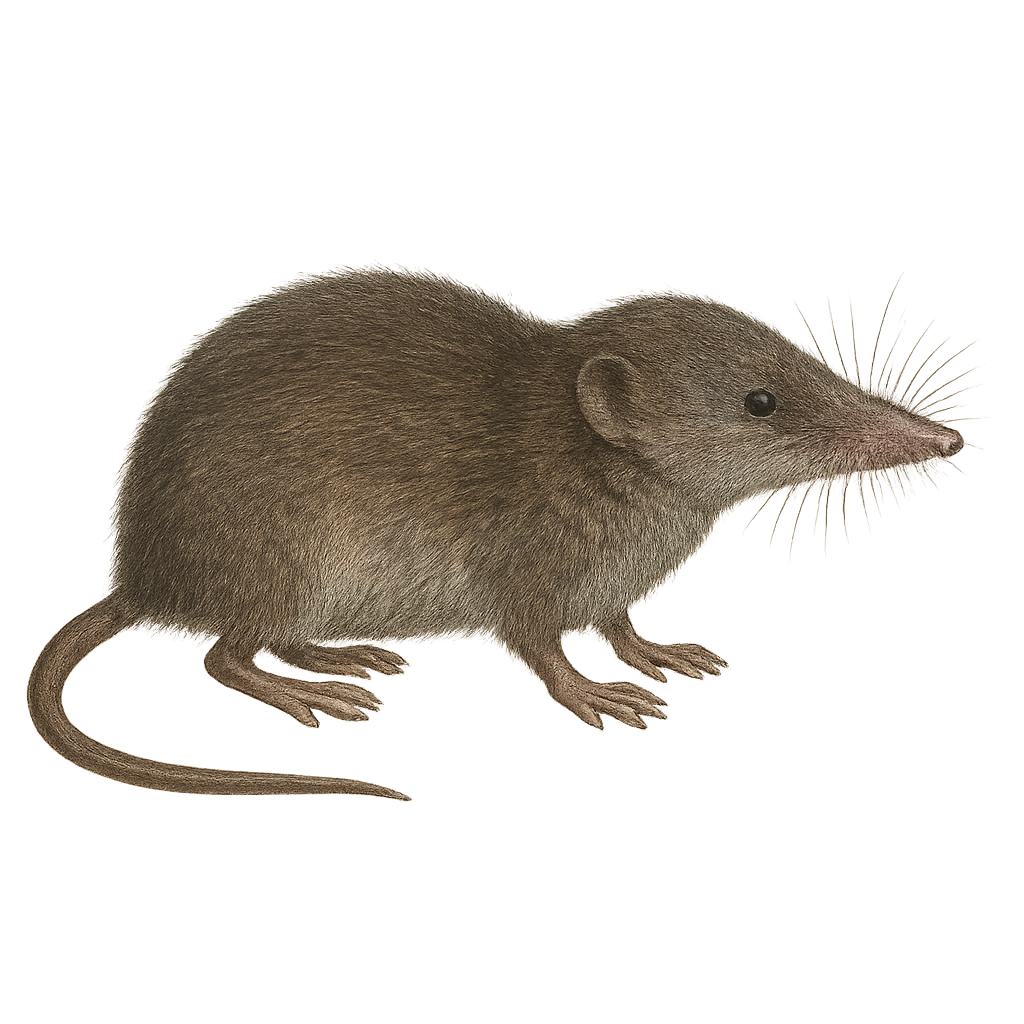Your wildlife photography guide.
Explore the common shrew in detail, study its behavior, prepare your shots.
Where to observe and photograph the common shrew in the wild
Learn where and when to spot the common shrew in the wild, how to identify the species based on distinctive features, and what natural environments it inhabits. The WildlifePhotographer app offers tailored photography tips that reflect the common shrew’s behavior, helping you capture better wildlife images. Explore the full species profile for key information including description, habitat, active periods, and approach techniques.
Common shrew
Scientific name: Sorex araneus

IUCN Status: Least Concern
Family: SORICIDAE
Group: Mammals
Sensitivity to human approach: Suspicious
Minimum approach distance: 2 m
Rut period: April to August
Gestation: 18-22 jours
Births: April to September
Habitat:
Forests, meadows, hedgerows
Activity period :
Mainly active at night, generally discreet during the day.
Identification and description:
The common shrew, or Sorex araneus, is a small insectivorous mammal found primarily in Europe. It measures about 5 to 8 cm in length, excluding its tail, which adds an additional 3 to 5 cm. Its fur is typically dark brown on the back and lighter on the belly, allowing it to blend into its natural surroundings. It has a pointed snout and characteristic red-tipped teeth. The common shrew is a very active animal, spending most of its time foraging for food, mainly insects, spiders, and worms. It has a very fast metabolism, meaning it needs to eat frequently to survive.
Recommended lens:
Macro – adjust based on distance, desired framing (portrait or habitat), and approach conditions.
Photography tips:
To photograph the common shrew, it is advisable to use a macro lens to capture the details of this small mammal. Look for areas where it is active, such as forest edges or meadows. Be patient and discreet, as it is suspicious and quick. Try photographing early in the morning or late in the afternoon when the light is soft and the shrew's activity is at its peak. Use a tripod to stabilize your camera and achieve sharp images.
The WildlifePhotographer App is coming soon!
Be the first to explore the best nature spots, track rutting seasons, log your observations, and observe more wildlife.
Already 1 431 wildlife lovers subscribed worldwide

